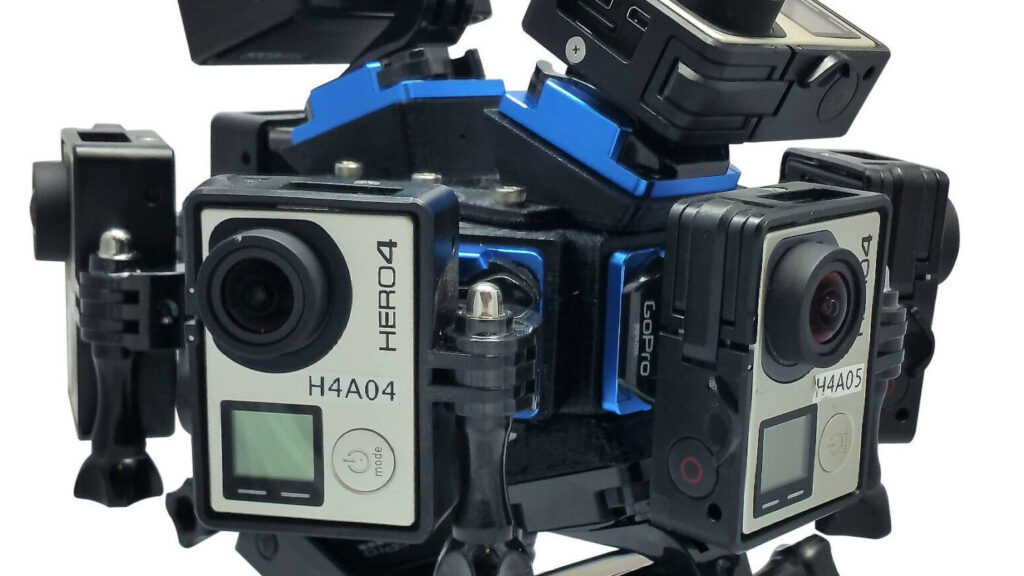360 Immersive Discuss 360-degree Cameras And How They Have Advanced To Ease-of-Use Systems That Make VR Training For Organizations Easy To Impliment.
This is 360 Immersive, join us here to learn more about what’s next, newest, and greatest with VR and AR training technology. Today we’re gonna learn a little bit more about something that’s pretty interesting, the history of 360 cameras. We’re going to find out where they started, and then move forward to now and see what is next. So, where did all begin?
David:
So, if you think about the VR industry, as far as 360 cameras are concerned, has been around for about four years, which isn’t a long time, but in that time, we’ve come a long ways. And I dug this up out of the basement. (Holding up 3D camera rigging). This is what we used to use, and each one of these slots had a separate GoPro mounted on it. And then, you had to take all of this data from all of these cameras and stitch it together into one experience. So, it was a hugely laborious act, but it was so cool, because we could create virtual reality. Everybody dreamed about it, suddenly we could do it.
But if you can transform yourself into the present, I brought a couple cameras in. So, the Garmin has been around for about a year and a half, and it’s actually still on the market. It’s a great little camera when it comes to one specific feature, and it does internal stabilization. So, we can actually take a 360 camera, we can put it on a helmet, or we could put it in situations that we could never put in before. Maybe for instance on doing motorcycle training, or transportation training. Because it internally stabilizes that footage to level out the horizon, and keep people from getting sick. And that’s usually important when it comes to VR training because we want to have people have a good experience. These cameras, I think they’re now about $700. So, they were a little over $800 when they first came out, but this camera does everything the Garmin does, six degrees of internal gyroscopic stabilization, does a great job when it comes to the visuals, and it’s half the money. So, you’re talking a sub $390 buy and the fact that organizations can now purchase one, and they can start doing their own training, and that’s – what we’d like to say is if that you can use a smartphone, you can use your iPhone or Android in your pocket and you can shoot a video, guess what? You can shoot VR training. And if you can do that, you can contribute to your organization. So, we’ve gone a long way in for years. Undoubtedly, a year from now we’re going to certify new cameras, we’re going to have continuing conversations about the technology; what’s new, what’s unusual, what’s coming out, the price will probably continue to drop, but if you want to get into shooting VR training today for $400, it’s going to be a great experience for you.
Breean:
Well, thank you for bringing one of the very first artifacts in the not-opened-yet VR Museum to life. That’s really interesting to see how quickly things change in such a very short period of time. And that’s why you need to stay with us so that you continue to learn about what’s coming out, and where it all started.If you have any questions, make sure to drop them in the comments and subscribe!
Thank you so much, this is 360 Immersive.


